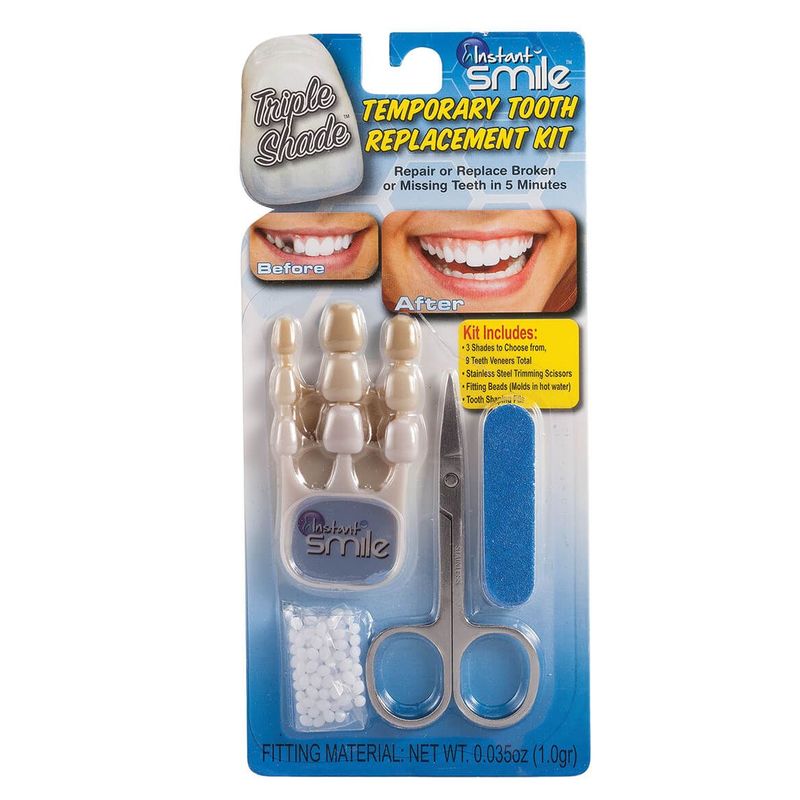
Got a broken tooth? Don’t fret! I’ve got the ultimate solution for you: an instant makeover that will have your tooth looking good as new in just minutes. In this article, we’ll dive into the world of fixing broken teeth and explore the quick and easy ways to transform your smile. So, sit back, relax, and get ready to discover the secrets to a flawless smile in no time!
Now, before we jump into the nitty-gritty of fixing a broken tooth, let’s take a moment to appreciate the power of a confident smile. Your smile is like a window to your soul, and a broken tooth can sometimes dampen your confidence. But fear not, my friend! With a few simple techniques, you’ll be able to restore that radiant smile and boost your self-esteem. Whether you’re dealing with a chipped tooth or a more severe break, we’ve got you covered. So, without further ado, let’s dive into the world of instant makeovers for broken teeth and discover how to fix a broken tooth in minutes.
Instant Makeover for a Broken Tooth: How to Fix a Broken Tooth in Minutes
When it comes to a broken tooth, a quick fix can make a big difference. Here’s a step-by-step tutorial on how to give your broken tooth an instant makeover:
- Start by cleaning the area around the broken tooth with warm water and a soft toothbrush.
- Apply dental wax or sugarless gum to cover any sharp edges or exposed nerves.
- If the tooth is chipped, use dental bonding material to reshape and restore the tooth’s appearance.
- For a temporary fix, try using a dental repair kit that includes dental cement to hold the broken pieces together.
- Remember to visit a dentist as soon as possible for a permanent solution.
With these simple steps, you can quickly fix a broken tooth and enjoy an instant makeover. Remember, professional dental care is essential for long-term oral health. Take care of your teeth!

Instant Makeover for a Broken Tooth: How to Fix a Broken Tooth in Minutes
Are you dealing with a broken tooth and in need of a quick fix? Don’t worry, you’re not alone. Many people experience dental emergencies, such as chipped or broken teeth, and it can be a stressful situation. Fortunately, there are several instant makeover options available that can help you fix a broken tooth in minutes. In this article, we will explore some of these options and provide you with practical tips to address this dental issue swiftly and effectively.
1. Dental Bonding: A Simple and Effective Solution
Dental bonding is a popular method used to fix broken teeth. It involves the application of a tooth-colored resin material to the affected area, which is then shaped and polished to match the natural appearance of your teeth. Dental bonding is a quick procedure that can be done in a single visit to your dentist’s office.
One of the major advantages of dental bonding is its affordability. Compared to other cosmetic dental procedures, dental bonding is a cost-effective solution for repairing broken teeth. Additionally, it requires minimal tooth preparation, making it a conservative option that preserves your natural tooth structure. With proper care, dental bonding can last for several years, providing you with an instant makeover for your broken tooth.
Benefits of Dental Bonding
- Time-Saving Procedure: Dental bonding is completed in a single visit, saving time and minimizing the need for multiple appointments, making it convenient for busy individuals.
- Conservative Treatment: Unlike crowns or veneers, bonding preserves natural tooth structure as minimal enamel removal is required, maintaining the integrity of the tooth.
- Affordable Option: Dental bonding is cost-effective compared to other cosmetic procedures like crowns or veneers, making it accessible to a wider range of individuals.
Limitations of Dental Bonding
- Material Strength: The resin used in bonding is not as strong as natural teeth or other restorative materials, making it more susceptible to chipping or staining over time.
- Durability Concerns: While bonding provides a solution for broken teeth, it may not be as resistant to wear and tear as alternatives like dental crowns.
- Maintenance Requirements: Proper care and regular dental check-ups are essential to ensure the longevity of dental bonding, requiring ongoing maintenance for optimal results.
2. Dental Veneers: Concealing Imperfections with Ease
If you’re looking for a more comprehensive solution to fix a broken tooth, dental veneers may be a suitable option for you. Dental veneers are thin shells made of porcelain or composite resin that are custom-made to fit over the front surface of your teeth. They can effectively conceal imperfections, such as chipped or broken teeth, giving you an instant makeover.
The process of getting dental veneers typically involves two visits to your dentist. During the first visit, your dentist will prepare your teeth by removing a small amount of enamel. This is necessary to ensure a proper fit and natural appearance of the veneers. Afterward, impressions of your teeth will be taken and sent to a dental laboratory, where your custom veneers will be fabricated. Once the veneers are ready, you will return for the second visit, during which your dentist will bond the veneers to your teeth using a special adhesive.
3. Dental Crowns: Restoring Functionality and Appearance
In cases where a broken tooth is severely damaged or requires more extensive repair, a dental crown may be necessary. Dental crowns, also known as caps, are custom-made restorations that cover the entire visible portion of a tooth. They are designed to restore both the functionality and appearance of a broken tooth.
The process of getting a dental crown typically involves two visits to your dentist. During the first visit, your dentist will prepare your tooth by removing any damaged or decayed tissue. The tooth will then be shaped to accommodate the crown. An impression of your tooth will be taken and sent to a dental laboratory, where your custom crown will be fabricated. In the meantime, a temporary crown will be placed over your tooth to protect it. Once the permanent crown is ready, you will return for the second visit, during which your dentist will remove the temporary crown and bond the permanent crown in place.
4. Temporary Solutions: Quick Fixes for Broken Teeth
In situations where you are unable to see a dentist immediately or are waiting for a dental appointment, there are temporary solutions you can try to fix a broken tooth. These solutions can provide temporary relief and help protect the broken tooth until you can receive professional dental care.
Temporary Solutions for Broken Teeth
- Dental Wax: Dental wax can be used to cover sharp or jagged edges of a broken tooth, preventing further irritation or injury to the surrounding soft tissues.
- Over-the-Counter Dental Cement: Over-the-counter dental cement can be applied to temporarily reattach a broken piece of tooth until you can see a dentist.
- Temporary Dental Filling: Temporary dental filling material, which can be purchased at most pharmacies, can be used to fill in a cavity or replace a broken filling temporarily.
It is important to remember that these temporary solutions are not meant to replace professional dental care. They should only be used as a temporary measure until you can see a dentist. It is recommended to seek prompt dental attention to prevent further damage or complications.
As with any dental emergency, it is crucial to contact your dentist as soon as possible to schedule an appointment. They will be able to assess the extent of the damage and provide appropriate treatment options to fix your broken tooth permanently.
Additional Tips for Maintaining Oral Health
While it’s important to address a broken tooth promptly, it’s equally essential to maintain overall oral health to prevent future dental issues. Here are some additional tips to help you maintain a healthy smile:
- Brush your teeth at least twice a day with a fluoride toothpaste.
- Floss daily to remove plaque and food particles from between your teeth.
- Limit your consumption of sugary foods and beverages.
- Avoid tobacco products, as they can contribute to oral health problems.
- Visit your dentist regularly for check-ups and professional cleanings.
By following these tips and seeking timely dental care, you can not only fix a broken tooth but also maintain a healthy and beautiful smile for years to come.
Key Takeaways: Instant Makeover for a Broken Tooth: How to Fix a Broken Tooth in Minutes
- 1. A broken tooth can be fixed quickly and easily with the right techniques.
- 2. Dental wax or temporary filling material can provide a temporary solution until you can see a dentist.
- 3. Avoid chewing on the broken tooth to prevent further damage.
- 4. Applying clove oil or a numbing gel can help alleviate any pain or discomfort.
- 5. It’s important to seek professional dental care to properly fix a broken tooth for long-term results.
Frequently Asked Questions
Can a broken tooth be fixed in minutes?
While it is not possible to completely fix a broken tooth in just minutes, there are temporary solutions that can provide an instant makeover and alleviate discomfort. One option is dental wax, which can be applied to the sharp edges of the broken tooth to prevent irritation to the tongue and cheeks. Dental wax can be found at most pharmacies and is easy to use. However, it is important to note that dental wax is not a permanent solution and should only be used as a temporary fix until you can see a dentist.
If you are experiencing severe pain or if the broken tooth has caused significant damage, it is best to seek immediate dental care. A dentist will be able to assess the extent of the damage and provide appropriate treatment to fix the broken tooth.
What should I do if I break a tooth?
If you break a tooth, it is important to take immediate action to prevent further damage and alleviate any pain or discomfort. First, rinse your mouth with warm water to clean the area. If there is any bleeding, apply gentle pressure with a piece of gauze or a clean cloth. To reduce swelling, apply a cold compress to the affected area from the outside of the mouth.
It is crucial to see a dentist as soon as possible after breaking a tooth. Only a dentist can properly assess the damage and provide appropriate treatment. Avoid eating hard or crunchy foods and refrain from using the broken tooth for chewing until you can see a dentist.
Can I fix a broken tooth at home?
While there are temporary solutions available to fix a broken tooth at home, it is recommended to seek professional dental care for a long-term solution. Temporary fixes such as dental wax or over-the-counter dental cement can provide immediate relief and protect the broken tooth from further damage. However, these solutions are not permanent and should only be used until you can see a dentist.
A dentist will be able to assess the extent of the damage and provide appropriate treatment to fix the broken tooth. This may include dental bonding, a dental crown, or in severe cases, a root canal or extraction. It is important to remember that attempting to fix a broken tooth at home without professional guidance can lead to further complications and may require more extensive treatment in the future.
How much does it cost to fix a broken tooth?
The cost of fixing a broken tooth can vary depending on several factors, including the extent of the damage, the location of the tooth, and the specific treatment required. In general, less severe cases may be treated with dental bonding, which can range from $100 to $400 per tooth. A dental crown, which is a more extensive treatment, can cost between $800 and $1,500 per tooth.
If the broken tooth has caused damage to the root or if a root canal is required, the cost can increase significantly. Root canals can range from $500 to $1,000 per tooth, and additional costs may be incurred for dental restoration or extraction. It is best to consult with a dentist to get an accurate estimate of the cost based on your specific situation.
How long does it take to fix a broken tooth?
The time it takes to fix a broken tooth can vary depending on the severity of the damage and the specific treatment required. In some cases, minor chips or cracks can be repaired in a single dental visit using dental bonding or a dental crown. These procedures typically take about one to two hours.
However, if the broken tooth requires more extensive treatment such as a root canal or extraction, multiple dental visits may be necessary. Root canals can take two or more visits, with each visit lasting about one to two hours. Extraction and implant procedures can also take multiple visits and may require a healing period before the final restoration is placed.
Instant Smile Temporary Tooth Kit – How to fit.
Final Thoughts
So there you have it, folks! A broken tooth is never a pleasant experience, but with these quick and easy tips, you can give it an instant makeover in just minutes. Remember, though, these solutions are temporary and should not replace professional dental care. It’s always best to consult with a dentist for a long-term fix.
In today’s fast-paced world, it’s comforting to know that there are quick fixes available for common problems like a broken tooth. Whether you opt for dental wax, temporary filling material, or a DIY tooth repair kit, these solutions can help you regain your confidence and alleviate any discomfort. Just be sure to follow the instructions carefully and seek professional help when needed.
Now, armed with this knowledge, you can face any tooth mishap with confidence. Don’t let a broken tooth ruin your day – take action and give yourself an instant makeover. Remember, a beautiful smile is just a few minutes away!
Call or Book appointment online
:Ace Dental Care Alpharetta office: 678-562-1555 - Book Now
Ace Dental Care Norcross office: 770-806-1255 - Book Now
Disclaimer
This blog post was generated by artificial intelligence. The content of this post may not be accurate or complete, and should not be relied upon as a substitute for professional advice. If you have any questions about the content of this post, please contact us.
We are constantly working to improve the accuracy and quality of our AI-generated content. However, there may still be errors or inaccuracies. We apologize for any inconvenience this may cause.





